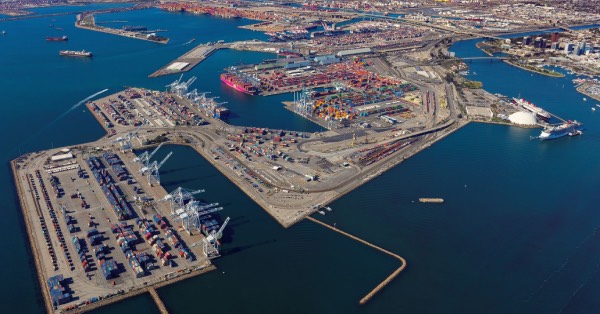The Port of Long Beach is leading the charge to achieve its zero-emissions goals, but the effort requires significant public and private investment in developing and deploying equipment and charging and hydrogen-fueling infrastructure, the Port’s Managing Director of Planning and Environmental Affairs Heather Tomley told a California State Senate committee this week.
Tomley, an original author of the landmark San Pedro Bay Ports Clean Air Action Plan, was one of more than a dozen stakeholders who testified Tuesday during a Clean Transportation hearing convened by the Senate Committee on Transportation chaired by Sen. Lena Gonzalez, D-Long Beach.
The zero-emission technologies are still developing and are currently being designed and demonstrated to ensure they can meet the operational requirements at the Port. Significant progress has been made over the past several years; however, zero-emission replacements that can meet the rigorous requirements of Port work aren’t fully feasible in most applications today. In addition, heavy-duty charging and hydrogen-fueling infrastructure will need to be developed in the terminals and throughout the region to support these zero-emission vehicles. Further, the estimated cost of converting terminal equipment and the drayage truck fleet to full zero emissions at the San Pedro Bay ports complex ranges from $7 billion to $14 billion.
“While these challenges are real and daunting, we can get through them to achieve a zero-emissions future, if we work together, and remain clear focused and make a deliberate effort to address them,” Tomley said.
More than $150 million in zero-emissions demonstration projects at Port of Long Beach container terminals are helping to nurture zero-emissions technology. The largest in reach and scope, the Sustainable Terminals Accelerating Regional Transformation (START) project, involves testing more than 100 pieces of zero-emissions equipment and trucks at three California seaports: Long Beach, Oakland, and Stockton. The $102 million project received a $50 million grant from the California Air Resources Board and is also deploying two of the cleanest ships to call on the West Coast, and advancing workforce development programs to support sustainable goods movement.
Conducted in partnership with the neighboring Port of Los Angeles, the Clean Air Action Plan (CAAP) is the landmark strategy created by America’s two busiest ports to safeguard public health by improving air quality. Since 2005, port-related air pollution emissions at the Port of Long Beach have dropped 90% for diesel particulate matter, 62% for nitrogen oxides, and 97% for sulfur oxides, all during a period when container traffic has increased by more than 21%.
The CAAP was updated in 2017 with new strategies focused on improving air quality and reducing greenhouse gases, including a goal for a zero emissions terminal equipment fleet by 2030 and a zero emissions truck fleet by 2035.
To support this goal, on April 1, 2022, the Port of Long Beach will start collecting its Clean Truck Fund Rate. The rate for loaded containers hauled by nonexempt trucks is $10 per twenty-foot equivalent unit – a standard measure for one 20-foot-long cargo container. It will be paid by cargo owners. The Clean Truck Fund Rate is expected to generate $90 million in the first year, or $45 million per port. The fund will be used to incentivize and accelerate the transition to cleaner trucks.









































